Miss Amy picked us up about 8:30 a.m., Sunday, to drive us to the Salt Lake City airport to catch our 11:00 a.m. flight, first to Atlanta, then to Dublin. We could have called a taxi but imposing on the kids is fun and rewarding . . . . Amy is funnier than a non-english speaking taxi driver. Arriving in Atlanta on schedule, we decided to walk, rather than take the train, to the International Concourse E from our arrival gate in Concourse A. It was quite a walk, but we were entertained with some Atlanta history in the underground tunnel. After a quick bite to eat, we waited . . . about three hours for our flight to Dublin. Can't beat people watching in an airport on a Sunday afternoon.
Good old Delta
. On an international flight, we actually did get real food, that wasn't bad, for dinner. About the same quality as the homeless shelter. Breakfast, on the other hand, was an embarrassment, considering how many "foreigners" were on our flight. When we flew Air France to Jordan, we were given FREE Champagne and GOOD food. Air China to Viet Nam had the best eye candy! God Bless America! We think that for our international flights we will stick to airlines from other countries whenever possible.
We arrived in Dublin about 8:30 a.m. -- 12:30 a.m. in Utah. We made it through customs, exchanged $$ for €€, found the #16 bus with one small faux pas, which dropped us off directly in front of the Portobello B & B. We haven't figured out why the mushroom name, but there is also a Portobello Street. This row house was built about 150 years ago. The proprietors, Eileen and Paul, are delightful. Paul has an Irish sense of humor that takes a little getting used to after coming from our sheltered existence in Utah
. Every other word is "f _ _ _" or "Jeezus." He sold clothing on Carnaby Street in London during the late 60s so he knew all of the rock stars of that era.
After a morning cup of tea, we hit the pavement to walk off an eight hour flight and to get our bearings around this ancient city. With a good pair of walking shoes, this town is an easy hike, physically. But, like London, it is a disorganized mess. Coming from our orderly Salt Lake life, it is hard to get used to streets changing names every block or two, street numbers that have NO relationship to the numbers just across the intersection and, as a final test of sanity, the street names are very cleverly disguised or nonexistent. Daniel Boone was once asked if he was ever lost, to which he replied, "No, but I was a bit bewildered for a week once." We were bewildered for the whole afternoon.
We did, however, find O'Neill's Pub next to Trinity College for some hearty pub grub
. Needless to say, we also found Trinity College, the Book of Kells, and the Long Room, which is the historical collection of the college library and which is jaw dropping and not to be missed. Absolutely incredible! We happened to stumble onto Trinity on the orientation day for the Freshy class. Ah, to be a kid again! The green was filled with kids and club booths for the neophytes to sign up for any club imaginable. A fun experience that happens only one day a year and we hit it.
Luckily, we managed to find our way home without me jeopardizing my manhood by having to ask directions. Finally, after 24 hours awake we took a break and a nap! Some blog time and a bed calls.
We Have Landed
Monday, September 15, 2014
 Dublin, County Dublin, Ireland
Dublin, County Dublin, Ireland
Other Entries
-
1About This Blog
Sep 0114 days prior Salt Lake City, United Statesphoto_camera0videocam 0comment 0
Salt Lake City, United Statesphoto_camera0videocam 0comment 0 -
2Leaving On A Jet Plane . . .
Sep 132 days prior Salt Lake City, United Statesphoto_camera2videocam 0comment 0
Salt Lake City, United Statesphoto_camera2videocam 0comment 0 -
3We Have Landed
Sep 15 Dublin, Irelandphoto_camera20videocam 0comment 5
Dublin, Irelandphoto_camera20videocam 0comment 5 -
4Dublin Hop On, Hop Off
Sep 161 day later Dublin, Irelandphoto_camera35videocam 0comment 1
Dublin, Irelandphoto_camera35videocam 0comment 1 -
5We Traveled Back in Time
Sep 172 days later County Meath, Irelandphoto_camera54videocam 0comment 5
County Meath, Irelandphoto_camera54videocam 0comment 5 -
6Our First Day on the Left
Sep 183 days later Roundstone, Irelandphoto_camera11videocam 0comment 0
Roundstone, Irelandphoto_camera11videocam 0comment 0 -
7Connemara
Sep 194 days later Letterfrack, Irelandphoto_camera32videocam 0comment 2
Letterfrack, Irelandphoto_camera32videocam 0comment 2 -
8Downtown Galway
Sep 205 days later Galway, Irelandphoto_camera34videocam 0comment 2
Galway, Irelandphoto_camera34videocam 0comment 2 -
9The Burren
Sep 216 days later Doolin, Irelandphoto_camera31videocam 0comment 6
Doolin, Irelandphoto_camera31videocam 0comment 6 -
10The Aran Islands
Sep 227 days later Aran Islands, Irelandphoto_camera65videocam 0comment 2
Aran Islands, Irelandphoto_camera65videocam 0comment 2 -
11A day without tourists!
Sep 238 days later Milltown, Irelandphoto_camera30videocam 0comment 1
Milltown, Irelandphoto_camera30videocam 0comment 1 -
12Dingle Peninsula
Sep 249 days later Dingle, Irelandphoto_camera70videocam 0comment 0
Dingle, Irelandphoto_camera70videocam 0comment 0 -
13A Little Bit of Blarney . . . .
Sep 2510 days later Blarney, Irelandphoto_camera59videocam 0comment 1
Blarney, Irelandphoto_camera59videocam 0comment 1 -
14Just Another Dirty City . . .
Sep 2611 days later Cork, Irelandphoto_camera42videocam 0comment 1
Cork, Irelandphoto_camera42videocam 0comment 1 -
15"I Have Come Back!"
Sep 2712 days later Thomastown, Irelandphoto_camera14videocam 0comment 1
Thomastown, Irelandphoto_camera14videocam 0comment 1 -
16"Ballykissangel" And Then Some . . .
Sep 2813 days later Avoca, Irelandphoto_camera32videocam 0comment 0
Avoca, Irelandphoto_camera32videocam 0comment 0 -
17A Ring Around Kilkenny
Sep 2914 days later Cashel, Irelandphoto_camera69videocam 0comment 2
Cashel, Irelandphoto_camera69videocam 0comment 2 -
18The Medieval City of Kilkenny
Sep 3015 days later Kilkenny, Irelandphoto_camera35videocam 0comment 6
Kilkenny, Irelandphoto_camera35videocam 0comment 6 -
19Waterford and New Ross
Oct 0116 days later Waterford and New Ross, Irelandphoto_camera27videocam 0comment 3
Waterford and New Ross, Irelandphoto_camera27videocam 0comment 3 -
20Our Last day in Ireland
Oct 0217 days later Glendalough, Irelandphoto_camera41videocam 0comment 0
Glendalough, Irelandphoto_camera41videocam 0comment 0 -
21Ship of Fools
Oct 0318 days later Cherbourg, Francephoto_camera25videocam 0comment 0
Cherbourg, Francephoto_camera25videocam 0comment 0
Comments
2025-05-22
Comment code: Ask author if the code is blank

 Dublin, County Dublin, Ireland
Dublin, County Dublin, Ireland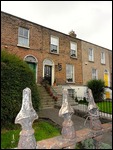
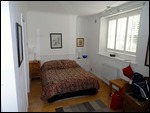
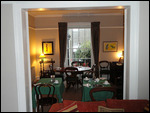



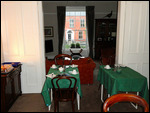
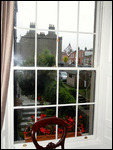
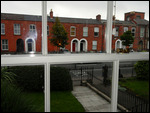
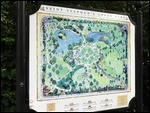
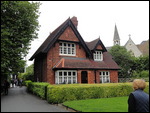
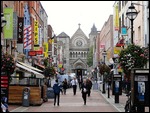
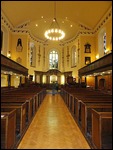

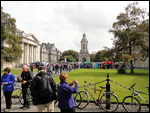
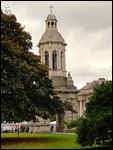
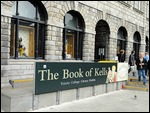
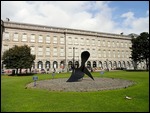
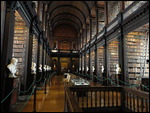


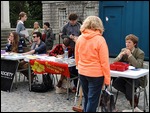
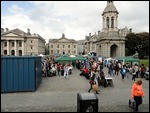
dayna-tom-2013
2014-12-28
Founded as a Viking settlement, the Kingdom of Dublin became Ireland's principal city following the Norman invasion. The city expanded rapidly from the 17th century and was briefly the second largest city in the British Empire before the Act of Union in 1800. Following the partition of Ireland in 1922, Dublin became the capital of the Irish Free State, later renamed Ireland.
dayna-tom-2013
2014-12-28
M.J.O'Neill's is a notable bar and restaurant in central Dublin. It occupies 2 Suffolk Street and adjacent buildings, continuing round the corner into Church Lane. It is claimed there has been a tavern on the site for some three hundred years. From 1875 it was owned by the Hogan Brothers, until M.J. O’Neill bought and renamed the premises in August 1927.
dayna-tom-2013
2014-12-28
Originally established outside the city walls of Dublin in the buildings of the dissolved Augustinian Priory of All Hallows, Trinity College was set up in part to consolidate the rule of the Tudor monarchy in Ireland, and it was seen as the university of the Protestant Ascendancy for much of its history. Although Catholics and Dissenters had been permitted to enter as early as 1793, certain restrictions on their membership of the college remained until 1873 (professorships, fellowships and scholarships were reserved for Protestants), and the Catholic Church in Ireland forbade its adherents, without permission from their bishop, from attending until 1970. Women were first admitted to the college as full members in 1904.
dayna-tom-2013
2014-12-28
The Book of Kells, sometimes known as the Book of Columba, is an illuminated manuscript Gospel book in Latin, containing the four Gospels of the New Testament together with various prefatory texts and tables. It was created in a Columban monastery in either Britain or Ireland or may have had contributions from various Columban institutions from both Britain and Ireland. It is believed to have been created ca. 800 CE. The text of the Gospels is largely drawn from the Vulgate, although it also includes several passages drawn from the earlier versions of the Bible known as the Vetus Latina. It is a masterwork of Western calligraphy and represents the pinnacle of Insular illumination. It is also widely regarded as Ireland's finest national treasure.
dayna-tom-2013
2014-12-28
The main chamber of the Old Library is the Long Room, and at nearly 65 metres in length, it is filled with 200,000 of the Library’s oldest books. When built (between 1712 and 1732) it had a flat plaster ceiling and shelving for books was on the lower level only, with an open gallery. By the 1850s these shelves had become completely full; largely as since 1801 the Library had been given the right to claim a free copy of every book published in Britain and Ireland. In 1860 the roof was raised to allow construction of the present barrel-vaulted ceiling and upper gallery bookcases.